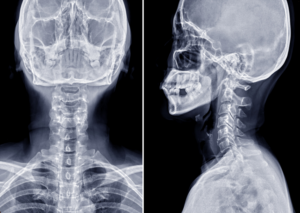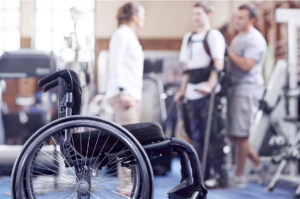Dr. Jefferson Wilson is the leading Principal Investigator of this prospective observational study titled, Natural History of Mild Degenerative Cervical Myelopathy: an observational study. This study follows patients with conservatively-managed mild degenerative cervical myelopathy for up to five-years and monitors for evidence of clinical deterioration through objective testing and clinician and patient-reported measures. Through the identification of the key clinical, radiological and serum biomarker related variables predicting clinical deterioration over time, this study aims to provide a better understanding of the natural history of mild degenerative cervical myelopathy, for which surgical intervention and non-operative management with close observation are both reasonable starting points for treatment decisions.
Dr. Jefferson Wilson is the leading Principal Investigator of this prospective observational study titled, Development of a new scale of functional impairment for use in clinical trials and practice in degenerative cervical myelopathy. This multiphase study’s overarching goal is to overall goal is to develop and test the measurement properties of a new patient-reported outcome measure, the Cervical Myelopathy Severity Index (CMSI) using a patient-centered, clinician informed mixed methods approach. The first stage of this study, item generation, involved semi-structured interviews with patients to determine items that are relevant to be included from the patient perspective. This stage also involved an item draft being circulated to clinicians with experience treating degenerative cervical myelopathy patients to determine item importance and feasibility. The second stage of this study, item reduction, involved circulating the item draft to clinicians and patients for ratings of item importance, and also of item severity for patients. This stage of the study resulted in the development of the Cervical Myelopathy Severity Index (CMSI), a 14- item DCM specific patient-reported measurement tool, which is now ready for assessment of its measurement properties, prior to incorporation of this measure into clinical practice and research, through a prospective multicenter cohort study.

Dr. Henry Ahn is the Principal Investigator of this long-term, nationwide registry study, The Rick Hansen Spinal Cord Injury Registry (RHSCIR). This study aims to monitor and analyze specific outcome measures for individuals with spinal cord injury (SCI) throughout various stages, including pre-hospitalization, acute treatment, rehabilitation, and reintegration into the community. The objective of RHSCIR is to build a comprehensive national database of SCI that can serve as a tool in clinical management and quality improvement, future research, administrative support, partnerships, and collaboration.
Dr. Jefferson Wilson is the leading Principal Investigator of this prospective international spinal cord injury study. It is an observational study to investigate patients who had ASIA D cervical spinal cord injury. The purpose of this study is to establish a set of outcome measures such as patient reported questionnaires, examinations and assessments that capture clinical changes in patients with milder forms of cervical spinal cord injury and to learn more about the feasibility and administration of outcome measures that will help to study the optimal management and treatment of patients with milder forms of spinal cord injury that will provide the best results.
Dr. Jefferson Wilson is the Principal Investigator of this prospective, multicentered study, “CASPER” – The Canadian-American Spinal Cord Perfusion Pressure and Biomarker Study. This study includes cervical and thoracic acute traumatic spinal cord injury (SCI) patients who are graded ASIA A, B, or C. Participants will have a lumbar intrathecal catheter inserted within 48 hours of their injury for the collection of cerebrospinal fluid (CSF) samples and the monitoring of intrathecal pressure (ITP). The study objectives are listed as the following:

Dr. Christopher Witiw is the Principal Investigator of this prospective, non-comparative, on- and open-label, interventional study, Safety, Radiological and Patient reported Outcomes of i-FACTOR+ Matrix Bone graft Device – A Canadian, Multicentre, Post-Market Clinical Investigation. This surveillance study aims to monitor and access safety, characteristics of care, and outcomes of multiple types of fusion procedures regarding the application of i-FACTOR+ Matrix Bone Graft. The study lasts up to two years, in which participants are followed up postoperatively at 6 months, 12 months, 1 year, and 2 years to collect patient-reported outcomes and monitor for safety. A CT imaging at the fusion segments will be collected at 12 months follow-up to determine the achievement of fusion.
Dr. Henry Ahn is the Principal Investigator of this multicentre, nationwide registry study, the Canadian Spine Outcomes and Research Network (CSORN) study. The CSORN study aims to create a comprehensive health data registry on the clinical outcomes of specific surgical and conservative treatment approaches targeting spinal pathologies affecting the cervical, thoracic, or lumbar region. The registry contains mainly patient and physician reported outcomes. Patients are followed for up to ten years regarding treatment outcomes and the quality of life. The study’s objectives include quality data management, patient care management and improvement, future research support, and partnership establishment.
Dr. Christopher Witiw and Dr. Errol Colak are the Principal Investigators of this project titled, Automated Surgical Intervention Support Tool for Traumatic Brain Injury, which was spearheaded by our research associate with expertise in AI modelling, Christopher Smith. This research project involved the development of an automated triage tool to predict neurosurgical intervention for brain-injured patients without any image-level labels, which has potential to increase triage efficiency between hospitals and care pathways for brain-injured patients. The model was trained, validated, and tested using a large retrospective test dataset of traumatic brain injury head CTs. The model was then deployed in a simulated prospective fashion on all TBI patients presenting to our center.